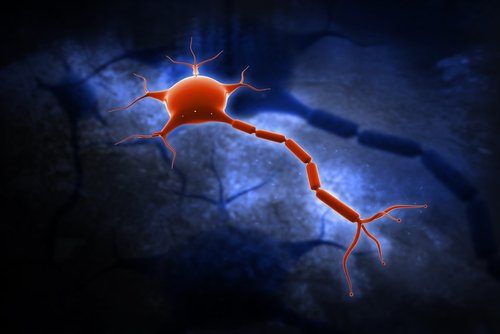Nerve Conduction Test May Help to Diagnose CMTX in People with Signs of CNS Involvement
Written by |

A nerve conduction test may help to diagnose Charcot-Marie-Tooth disease type X (CMTX) patients with neurologic episodes more common to diseases of the central nervous system.
The study, “The Electrophysiological Features in X-Linked Charcot-Marie-Tooth Disease With Transient Central Nervous System Deficits,” was published in the journal Frontiers in Neurology.
CMTX is the second most common type of CMT, with its disease-causing genetic alteration located on the X chromosome. Men, with only one X chromosome, have more severe symptoms than do women, who have two.
CMTX is characterized by a thinner protective layer of myelin surrounding nerve fibers of the peripheral nerve cells that connect the brain and spinal cord to muscles and sensory organs.
This causes progressive nerve cell degeneration, leading to muscle weakness and atrophy, and decreased sensation (touch, pain, or heat) mostly in the feet, legs, hands, and forearms.
While CMTX is associated with progressive and peripheral nerve damage — rather than to nerves of the brain or spinal cord — some studies have reported episodes of temporary central nervous system (CNS) damage, with detectable myelin lesions seen in the brain by magnetic resonance imaging (MRI).
These episodes may include stroke-like symptoms, weakness or numbness of the limbs, impaired speech, uncoordinated movements, or some combination of these deficits.
Diagnosing people experiencing these episodes can be difficult, since many neurologic diseases cause this type of temporary neurologic impairment.
Electrophysiological examination, namely nerve conduction studies, is useful for diagnosing CMTX1, as it can evaluate the functional integrity of motor and sensory peripheral nerves, and distinguish myelin damage-associated disorders and those caused by nerve fiber injury or loss.
A nerve conduction study includes a nerve conduction velocity test, which measures how quickly electrical impulses move along a nerve cell. Myelin damage is characterized by markedly slow nerve conduction velocities.
However, reports of detailed electrophysiological features of CMTX patients with episodic neurologic problems are rare.
To identify the electrophysiological features of these patients, researchers reviewed and analyzed published reports.
Their search led them to 17 studies that involved 21 CMTX1 male patients with episodes of temporary CNS issues, and MRI and electrophysiological data.
Eight were from North America, seven from Europe, and six from Asia. All had relatives diagnosed with CMT diseases. Their age at onset of these episodic CNS disturbances ranged from 0.5 to 18 years old (mean age, 12.02).
Patients had recurrent episodes, some that resolved in several minutes and others that lasted for as long as three days. Episodic symptoms included weakness of limbs (21 patients), impaired speech (17 patients), difficulties in swallowing (three patients), numbness (six patients), and uncoordinated movements (two patients).
The episodes developed after fever in nine patients (42.86%), exercise in four cases (19.05%), travel to high altitudes in two patients (9.52%), and vomiting and diarrhea in one patient (4.76%).
MRI data on these episodes were available for 20 patients, and all showed myelin damage, which lessened in subsequent MRIs performed on 17 patients.
Nerve conduction studies at the time of an episode showed significantly slower nerve conduction in all patients, with a significant decrease in nerve conduction velocity in both motor and sensory nerve cells, and delayed responses to nerve stimulation, characteristic features of CMTX.
Among the various measures used with these patients, median motor nerve conduction velocity (MNCV) was the most frequently assessed and the most reliable parameter to support a diagnosis of CMTX with transient CNS dysfunction.
“It is important to consider CMTX1 in previously healthy children who present with symptoms suggestive of recurrent or transient central nervous system deficits and to conduct thorough examination for features of CMT disease and electrophysiological testing,” the researchers wrote.




